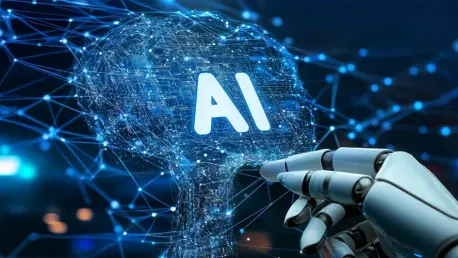The advent of automation in retail has reached a groundbreaking milestone with the unveiling of AI robots by the Japanese company Telexistence. Dubbed the “Model T,” these robots are poised to revolutionize retail operations by enhancing efficiency and addressing significant workforce challenges in Japan. As retailers around the world grapple with labor shortages and the need for increased operational efficiency, the innovative solutions offered by Telexistence promise to usher in a new era of retail automation.
Pioneering Retail Automation
The Model T and Its Unique Design
Telexistence’s Model T robot stands out for its innovative design, which resembles a kangaroo, a choice aimed at easing human interaction discomfort. This deliberate design effort ensures that the technology is more approachable and user-friendly, thereby enhancing its acceptance in everyday retail environments. The robots are set to undergo initial testing by stacking sandwiches, drinks, and ready meals on shelves at a Japanese convenience store, FamilyMart. This trial marks a significant step in demonstrating the practical applications of robotics powered by advanced artificial intelligence.
The Model T’s unique design is not merely aesthetic; it serves a functional purpose that aligns with Telexistence’s broader mission of integrating robots seamlessly into everyday human activities. By humanizing the appearance of these robots, the company aims to make the transition to automated retail environments smoother and less intimidating for both employees and customers. This focus on user-friendly design reflects a growing trend in the technology sector where form and function are harmonized to enhance human-technology interaction.
Leveraging AI for Human-like Movements
A standout feature of the Model T is its AI-driven capability to mimic human movements with remarkable precision. By utilizing virtual reality goggles and motion-sensor controls, the robots learn from human operators, effectively bypassing the extensive programming costs that traditionally hinder retail robotics. This approach not only makes the Model T a financially viable solution for retailers but also showcases the robot’s adaptability to various tasks within the retail environment.
The integration of AI in these robots ensures that they can undertake a multitude of functions, from stacking shelves to possibly even interacting with customers in the future, highlighting the wide range of potential applications. This flexibility is crucial in a retail landscape that is continuously evolving and requiring diverse skill sets to meet consumer demands. As the robots become more adept at understanding and performing tasks through AI learning, retailers can expect a substantial boost in both efficiency and customer satisfaction.
Addressing Labor Shortages and Workforce Challenges
Impact of Aging Population and COVID-19
Japan, with its aging population and labor shortages, presents unique challenges that the Model T aims to address effectively. The introduction of these robots comes at a crucial time when the COVID-19 pandemic has further strained the workforce, making automation an increasingly attractive solution for retailers. By taking over repetitive and physically demanding tasks, these robots free up human workers for more complex and customer-facing roles, thereby optimizing workforce allocation and ensuring uninterrupted retail operations.
This shift not only helps in mitigating the immediate labor crisis but also sets a precedent for how automation can be leveraged to tackle longer-term demographic challenges. As Japan’s population continues to age, the demand for innovative solutions like the Model T will likely grow, driving further advancements in robotic technology and AI applications. By addressing these pressing issues, Telexistence positions itself as a frontrunner in both technological innovation and practical problem-solving in the retail sector.
Remote Working and Workforce Inclusivity
A noteworthy aspect of Telexistence’s approach with the Model T is its potential to facilitate remote working. These robots enable individuals who are geographically or physically constrained to operate them from anywhere, thereby expanding workforce inclusivity and participation. This capability is transformative, particularly in a job market that is increasingly valuing flexible and remote work opportunities. By allowing a broader demographic to contribute to the retail sector, the Model T redefines traditional workforce dynamics and broadens the talent pool available to retailers.
This remote-working capability not only enhances inclusivity but also offers significant operational benefits. For instance, during times of crisis such as a pandemic, remote operation ensures that retail activities can continue without exposing workers to health risks. Moreover, it allows for a seamless transition between human operators, ensuring that the robots can be managed around the clock without the need for physical presence. This flexibility adds another layer of efficiency and resilience to retail operations, making the Model T an invaluable asset in both normal and challenging times.
Financial and Operational Efficiencies
Funding and Market Confidence
The financial backing from prominent investors, including Softbank Group, KDDI, and Airbus SE, underscores the robust market confidence in Telexistence’s technology. This significant funding is instrumental in accelerating the deployment of these robots across multiple stores, demonstrating the strong belief in their potential to revolutionize the retail sector. The planned rollout of the Model T to 20 FamilyMart stores in Tokyo by 2022 exemplifies the financial and temporal efficiencies provided by these robots. Their ability to perform tasks without extensive programming reduces costs and enhances operational speed, making them a valuable asset for retailers.
This influx of investment not only supports the immediate deployment but also enables continuous improvement and scaling of the technology. Telexistence can utilize this funding to refine the AI algorithms, enhance the hardware capabilities, and expand the use cases for the Model T. This sustained development will ensure that the robots remain at the cutting edge of retail automation, continuously offering new and improved functionalities that cater to evolving market needs.
Competitive Shift Towards Automation
The competitive landscape in the retail sector is rapidly evolving, with other convenience store chains like Lawson adopting similar robotic systems. This shift towards automation reflects a growing acceptance of technology-driven solutions to meet operational needs. The adoption of these robots by multiple retailers highlights a significant trend in the industry, where automation is increasingly becoming integral to business strategies, ensuring sustainability and growth in a rapidly changing market.
As retailers strive to stay competitive, the integration of advanced robotic systems like the Model T becomes not just an option but a necessity. This trend indicates a broader shift towards a future where human-robot collaboration is the norm, driving improvements in efficiency, accuracy, and customer service. By leading this shift, Telexistence is setting new standards in retail automation, compelling other players in the industry to follow suit or risk falling behind.
Broader Implications for Business and Employment
Technological Advancements and Job Markets
The introduction of the Model T and similar robots brings to the forefront the broader discourse on the future of work. These technological advancements are poised to reshape job markets, impacting employment patterns and operational frameworks in profound ways. While robots offer numerous benefits, such as heightened efficiency and safety, especially during pandemics, they also raise debates about job displacement versus job creation. The nuanced implications of automation on employment necessitate a balanced view to understand its long-term impact.
On one hand, the adoption of robots like the Model T can lead to the displacement of certain jobs, particularly those involving repetitive and physically demanding tasks. On the other hand, it can also create new opportunities in areas such as robot maintenance, AI programming, and remote operation. The challenge lies in managing this transition effectively, ensuring that workers are reskilled and upskilled to take on the new roles that emerging technologies create. This balanced approach will be crucial in leveraging the benefits of automation while mitigating its drawbacks.
Social Dimensions and Design Philosophy
The introduction of automation in retail has reached an extraordinary new level with the Japanese company Telexistence revealing their AI robots, known as the “Model T.” These advanced robots are set to transform retail operations by improving efficiency and tackling significant workforce issues that Japan faces. Retailers around the globe are struggling with labor shortages and increasingly demanding operational efficiency. The innovative solutions provided by Telexistence aim to lead the retail sector into a new era of automation. These robots are designed not just to fill labor gaps but to enhance productivity and ensure consistent service quality. They can handle various tasks ranging from stocking shelves to customer interactions, all while requiring minimal human intervention. By integrating Telexistence’s cutting-edge technology, retailers can expect a notable reduction in operational costs and a substantial improvement in service delivery. This advancement represents a critical step forward for the retail industry, promising to address ongoing challenges and create more streamlined, effective retail environments worldwide.









